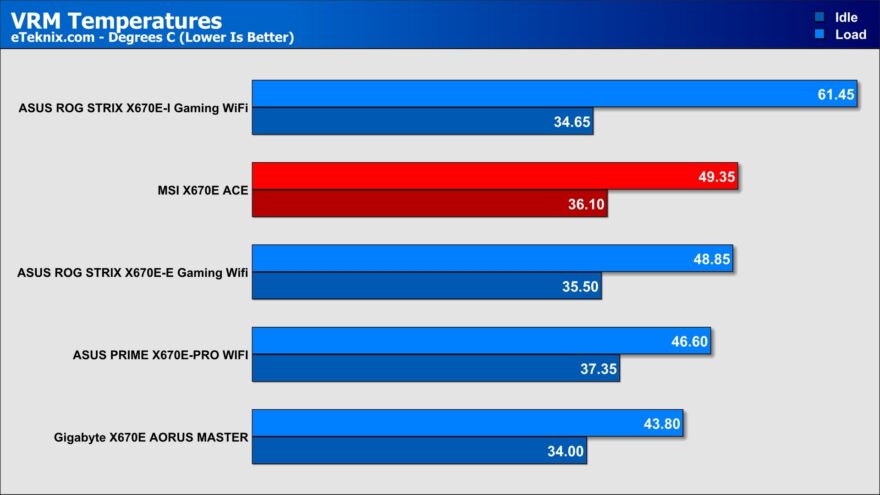MSI X670E ACE Motherboard Review

The other key areas that are worth focussing on though comes down to VRM temperatures, which can differ wildly depending on the amount, the capacity of the current that can pass through them, and of course how the various heatsinks handle that power, which in turn, creates heat.
VRM Temperatures

With the MSI X670E ACE, just like normal, we measure the VRM temperatures at idle and during a simulated load of Prime 95 on two points to get the most accurate result, using K-type probes fitted to the rear of the board. What we find is that during idle, the temperature of the VRMs were well within the range that we expected at 36 degrees, while during load, it didn’t actually raise that much. There were similar boards like the AORUS Master which fared slightly better, but the ACE still remained within safe limits.








